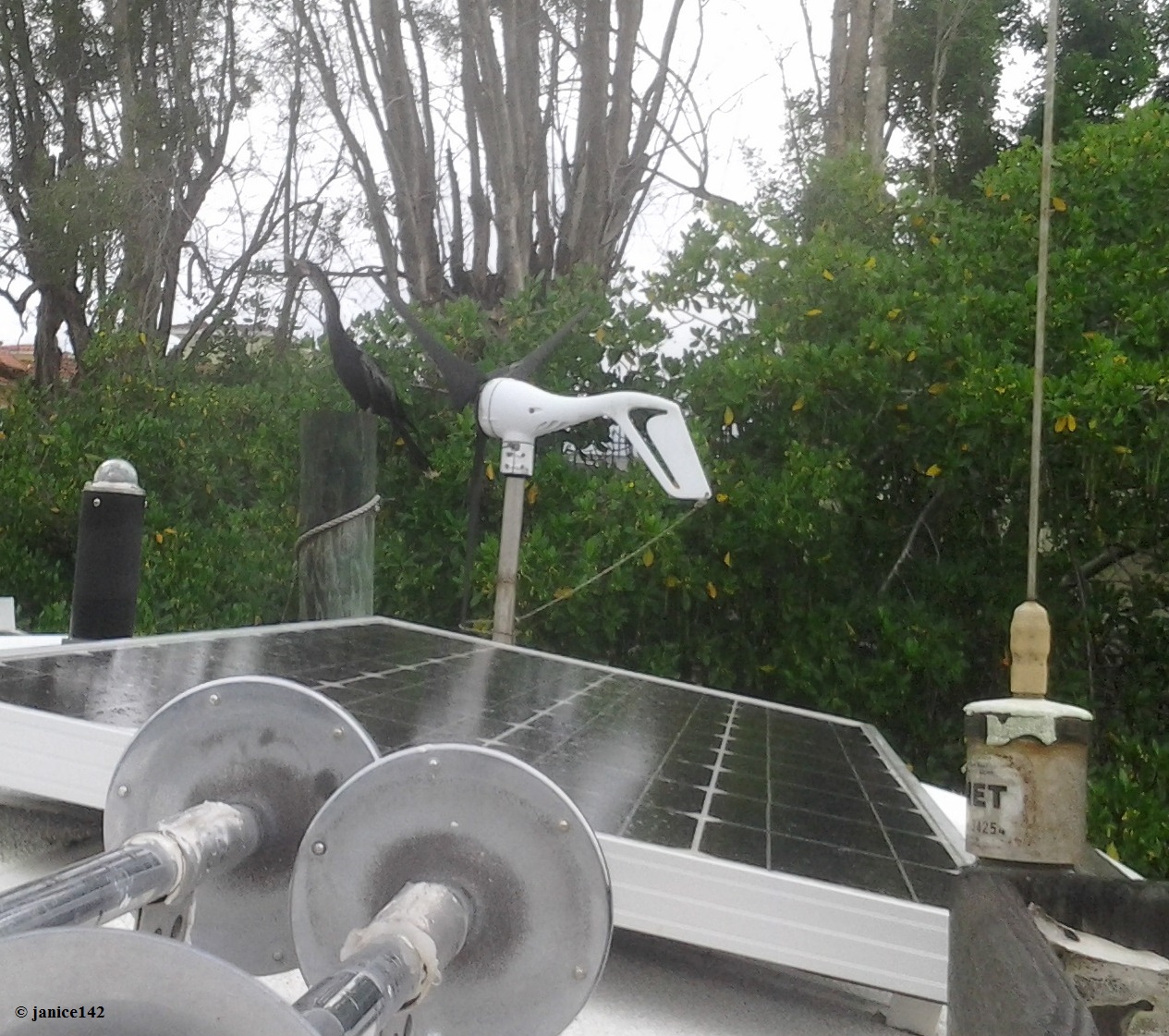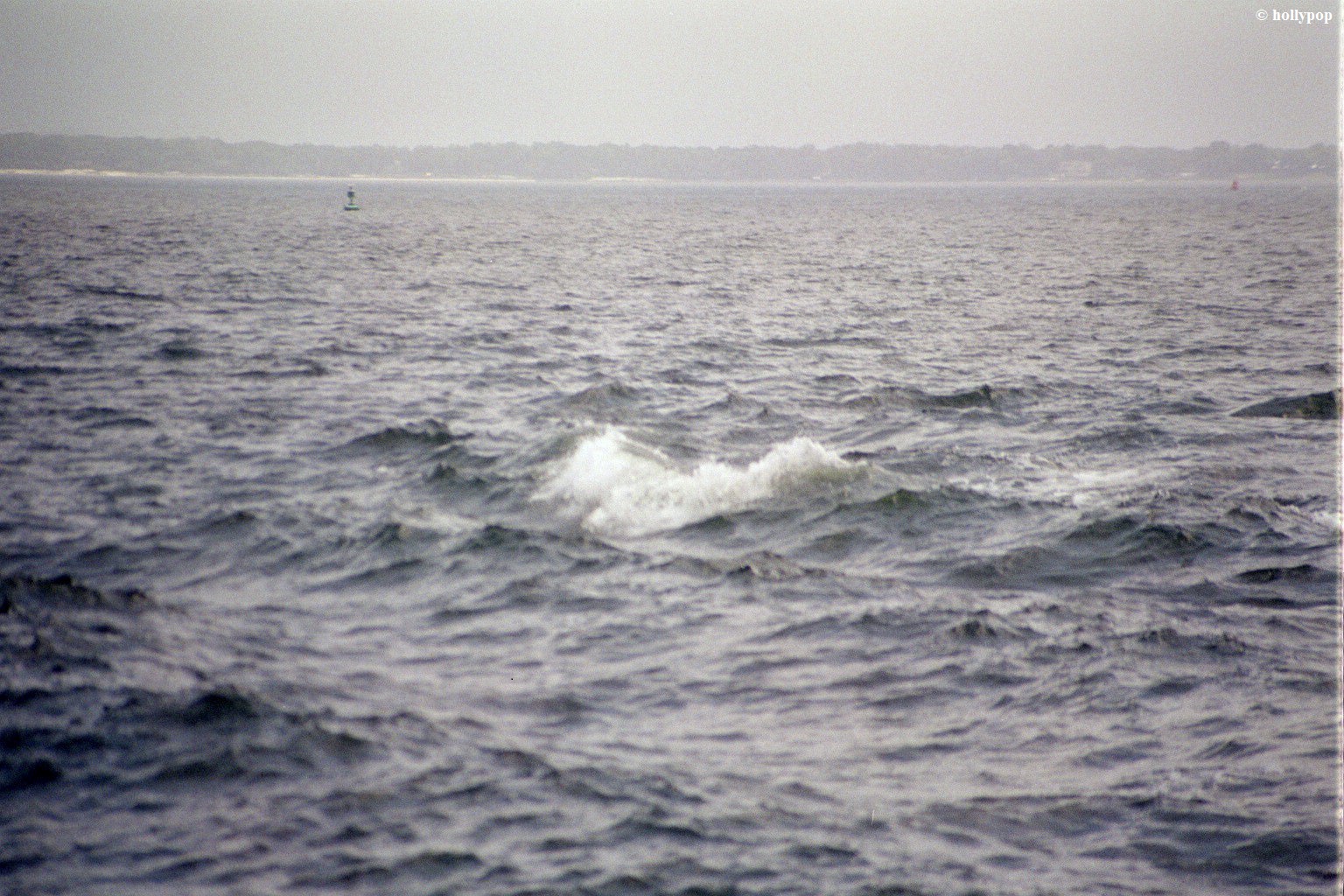![]() Home |
The Boat |
First Mate
|
Admiral |
Guestbook
Home |
The Boat |
First Mate
|
Admiral |
Guestbook
Date: 11 April 2016. Solar Makes Power (Part II)
© janice142
|
My friend
says people prefer to have all the information on one page and in
one article. I do not particularly care to click through either. In
any event, I have covered a lot of material herein. In bite-sized
pieces the articles are:
The complete version with all the information |
This is Part II, entitled Solar Makes Power.
I now have a bunch of solar panels and could not be happier. Recently I added two more 85 watt panels. They were a gift from Bucky. With the addition of those two it matters not if I am at anchor or at a dock. Everything works. Except me!

Behind the solar panel there is an anhinga sitting on
a piling to the immediate left of my wind generator.
I now have a total of 445 watts in five panels atop Seaweed. At this latitude with a plain old solar controller I have about 150 amps of power incoming each day. Life is wonderful afloat.
|
How to figure out how many amps from each solar panel. |
||||||||||||||||||||||||||||||
|
Here is a rough way to
figure out how much power your solar panel will produce: It is
all related to the angle of the sun, closeness to the equator,
and cloud cover. This is what I have found:
|
||||||||||||||||||||||||||||||
|
||||||||||||||||||||||||||||||
It matters not if I am plugged into a shore power or at anchor. My life is the same.EXCEPT I cannot run the wall-banger air-conditioner while at anchor. Well, actually I can run the a/c unit though I must simultaneously run the engine. It has to be mighty hot and muggy for that to happen!
One thing to remember is it is not just power generation you need to deal with. You also must have a place to store the power derived from solar, wind, etc. So as you are thinking about what you require, also factor in batteries.
Aboard Seaweed I have 700+ amp hours in seven batts. I get about 150 amps per day from my solar panels. Additionally I have a wind generator that helps bump things up too when the wind blows.
Note: It is never windy enough if you are like me and anchor close to shore and in the lee of islands. I prefer calm quiet anchorages to bumpy exposed places.
Please Note: This is a multi-part series about power for your boat's goodies. It encompasses solar power, batteries and inverters. Part Three, is next: Power Used Aboard Seaweed. The complete version with all the information contained in the four articles is on this page:
|
Currently (April 2016) my Comments are broken. Fortunately folks have emailed input, so here you go:
UPDATE: Thank you Cap'n Todd. I did correct the chart. Great explanation too! |
How many solar panels do you have aboard your boat?
Do you use an MPPT controller or the standard one?
|
Regarding the Comments Section, found at the end of every article:
|
COMMENTS:
© 2016, 2021, 2023
Categories: Boats, Gear, Wild Things,
Batteries Store Power ~
Previous Post ... ![]() ... Next Post
~
Power Used Aboard Seaweed
... Next Post
~
Power Used Aboard Seaweed
First Mate's Gallery now open ~ Crew photos welcome via Email.
The Archive holds a running list with synopsis of published articles, and links to same.
Every gift helps.
The Cruising Kitty is what boaters refer to as spending money. There's never enough aboard Seaweed!
I am also an Amazon Affiliate.


